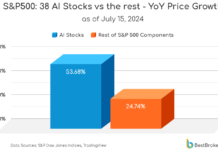
Global Medical Device Connectivity Market: Snapshot
Rising penetration of electronic health record (EHRs) is creating need for faster exchange of healthcare information. Also, growing patient-centric approach has boosted demand for high quality care to ensure safety of patients is propelling growth of the global medical device connectivity market. Additionally, adoption of EHRs and connectivity devices in healthcare reduces cost and increases efficiency for data analytics is fuelling adoption of medical device connectivity which is likely to propel growth of the global medical device connectivity market.
However, high cost of deployment and unwillingness of healthcare providers to adopt new technologies and medical device assembly services over the traditional methods are limiting growth of the medical device connectivity market. Additionally, some issues related to integration between numerous devices, and data security are limiting growth of the global medical device connectivity market. Moreover, the complexity of getting the necessary papers made the whole process more intricate. Learn more about medical device and drug manufacturer licensing.
According to the report by TMR, the global medical device connectivity market was valued at around US$ 3,500 million in 2012 and is anticipated to expand at a CAGR of around 37.8% from 2013 to 2019 to attain value of US$33.5 billion by the end of 2019.
Higher Adoption of Connectivity Devices from Hospitals to be Beneficial for Growth
On the basis of component, the global medical device connectivity market is segmented into wireless hardware, wired hardware, and software. Wireless hardware is further segmented in to Wi-Fi, web map tile service (WMTS), and Bluetooth. Of these, the wired hardware segment dominated the global medical device connectivity market and is expected to continue its dominance over the forecast period. This growth is attributable to the higher demand for wired hardware from end users due to efficient connectivity of these connectivity devices. However, demand for wireless hardware segment is growing from past few years. Of the wireless hardware, Wi-Fi has been identified as the most demanding sub-segment owing to its flexibility and advancement in connectivity.
On the basis of end user, the global medical device connectivity market is segmented into home healthcare, hospitals, and others. Of these, the global medical device connectivity market is dominated by the hospitals segment owing to higher adoption of medical devices from the hospitals and healthcare providers. However, growing trend of home healthcare is fuelling growth of the home healthcare segment in the medical device connectivity market.
Continuously Growing Healthcare Industry to Bolster Growth in Asia Pacific
On the basis of region, the global medical device connectivity market is segmented into North America, Europe, Asia Pacific, Latin America, and Rest of the World. Of these, North America is dominating the global market for medical device connectivity owing to higher adoption of new technology in the healthcare sector. Additionally, growing investment in the healthcare sector in order to improve the healthcare facilities are the key factor encouraging growth of the medical devices connectivity market. However, the Asia Pacific is expected to expand with faster CAGR due to higher population or patient’s pool and continuously growing healthcare industry in the region.
Key players operating in the medical device connectivity market include GE Healthcare, Qualcomm Life, Philips, Cerner Corporation, and NantHealth. The global medical devices market has highly consolidated vendor landscape owing to number of acquisitions, mergers, and partnerships in the market.

















